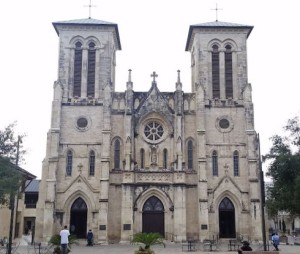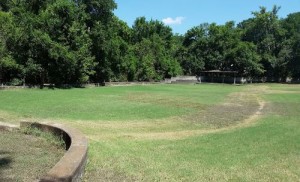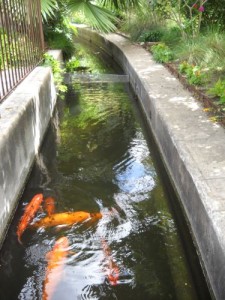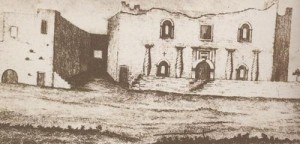San Pedro Springs Park which has also been known as just “San Pedro Park” in the past, is (depending on how you count) the second-oldest public park in the United States. The land where San Pedro Springs Park currently is was set aside for public use by the King of Spain in 1729, making it 95 years younger than the oldest public park in the United States, Boston Common. The “depending on how you count” is because the Trust for Public Land, which apparently uses different criteria for “park” places San Pedro Springs Park at tenth-oldest. Either way, though, San Pedro Springs Park is one of the oldest parks in the country.
Humans have been living in and around the area that is now San Pedro Springs Park for millennia. When the Spaniards arrived in 1709, the area was home to a Coahuiltecan tribe known as the Payaya. The Spaniards knew a good thing when they saw it, so they decided to move in there, as well. Unfortunately, there were two groups of Spaniards — soldiers and Franciscan missionaries and there was apparently some kind of conflict between them. Eventually, the missionaries set up on one side of the river and the soldiers on the other. This is the first of the missions named for San Antonio de Padua (the final one of these is the Alamo). The mission was moved to the other side of the river, then to where St. Joseph’s Church is today (I must remember the link when I get to writing up St. Joseph’s), and then to its final location.
In what is likely to be the most confusing sentence I will ever write, parks today aren’t what they were then. Parks started out as land for sort of general public use. Boston Common, the oldest park in the United States, was originally a field where residents could graze their cattle. And so it was with San Pedro Springs Park. The original use was primarily for travelers, however. The travelers would let their animals eat and drink and refill their water containers in this area. It wouldn’t become a park as we recognize the term until 1864.
Prior to 1864, one tenant of the land that is now San Pedro Springs Park was the military. Because of this history, the stone house in the park is generally thought of as an old fort or possibly a storage building for weapons. No one is sure where the building, generally known as the “Block House” was built, but a 1909 photograph shows a building that was already apparently old, and the architectural style looks to be from the mid-1800s.
Among the uses that we are sure the military put the land to was the garrisoning of soldiers and stabling camels that the Army attempted to use in military campaigns. The park was also a prisoner-of-war camp during the Civil War.
In 1864, a man named Jacob Duerler took over the park. He got a license to use the park for 20 years in exchange for fixing the damage done by the soldiers (and the camels) during the years when the military used the park. Duerler opened up a number of amusements including a fish pond and a bar. Duerler died 10 years into the 20-year period, and eventually his son-in-law took over. His son-in-law mismanaged the property and so when he wanted to break the lease early, the city allowed it. A new tenant, Frederick Kerbel, took over and made still more improvements to the park, including landscaping and the addition of a “grotto,” generally thought to be a summer home, which stands there today, and which looks kind of like a very large statue of Cousin Itt from The Addams Family.
When Kerbel’s lease expired, the city took over management of the park. Some of the buildings built during the era when the park was let to tenants remained, including the grotto and a strange star-shaped structure that originally had a fountain in the center.
When I first moved to San Antonio, the park had not been renovated for a long time and it looked sort of post-apocalyptic. They have done quite a lot of renovation, including upgrades to the swimming pool and the addition of a small skateboarding park. The park has a lot more visitors these days than I saw in my first visits, which is lovely to see.
Since San Pedro Springs Park is a historic landmark, there are some places that are not handicap accessible. For example, the photo at the top of the page was taken at the top of a flight of stairs. The top of that sort of bluff thing is accessible by a sloped path, however. The “shallow end” of the pool actually is a ramp that leads into the pool, making the pool itself handicap accessible (though I’m not sure about taking one’s wheelchair into the pool itself), from what I have read.




